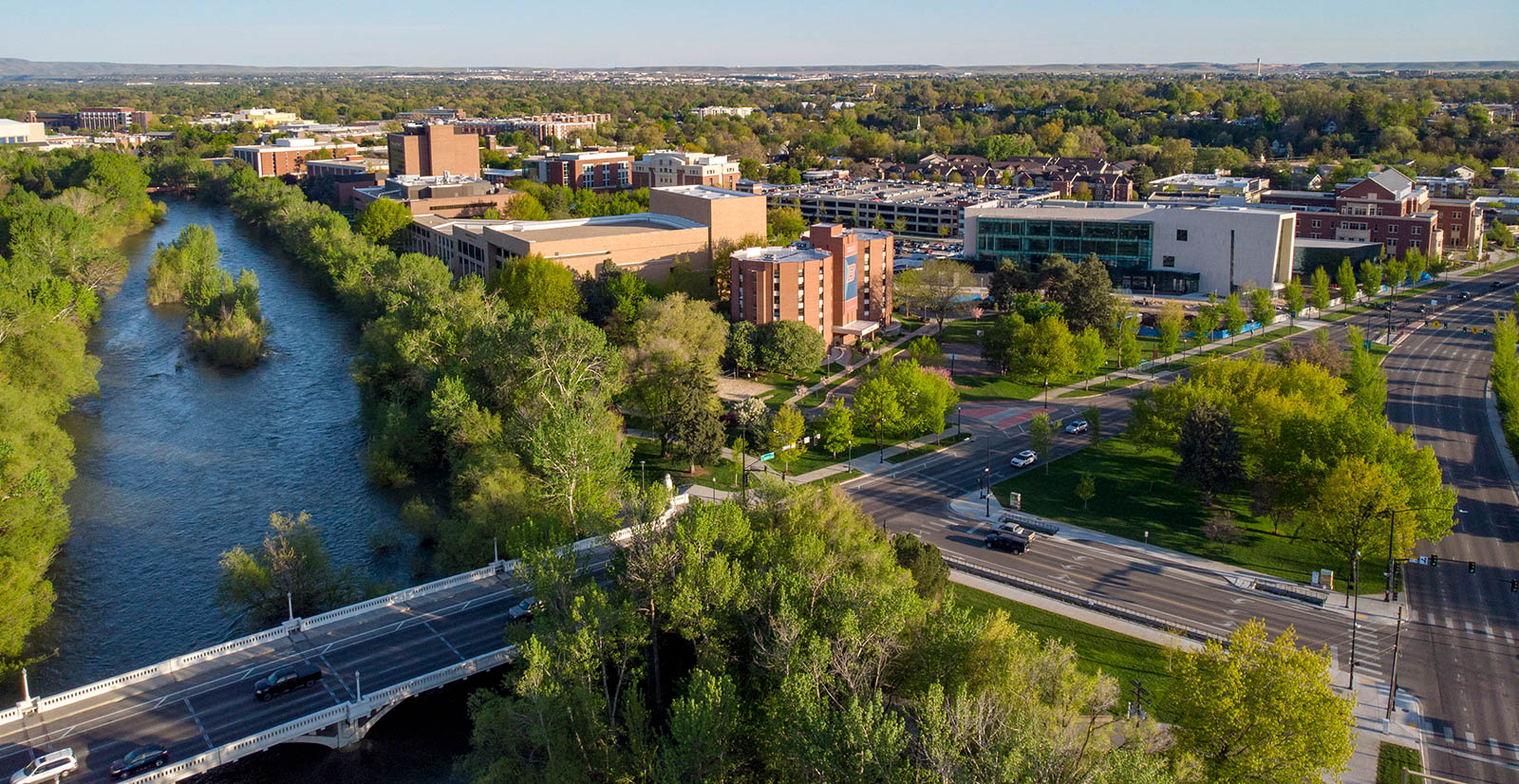
Students in professor Tom Gattiker’s Creating Sustainable Goods and Services class hosted a panel discussion on Boise’s affordable housing crisis. The panelists were Bart Cochran, CEO of LEAP Housing Solutions; Caleb Roope, CEO of The Pacific Companies; and Drew Alexander, who is the assistant director of Capital Planning at Boise State. They discussed some of the factors driving up housing prices in Boise and weighed possible solutions.
A growing problem
An article from June in USA Today reported that Boise has the fastest-growing housing prices in the nation. Over the past four years the average home price grew by 72%, from $224,000 in 2017 to $385,000 today.
The problem isn’t just a matter of growth. A study by Oxford Economics found that Boise was the least affordable city in the United States and the second least affordable in all of North America.
Panelists explained the soaring prices as an issue of supply and demand, a concept familiar to the business students in Gattiker’s class. “The fact that Boise is a great place to live is a major factor in the demand for housing here,” Cochran said.
Meanwhile, the supply side can’t provide enough houses for all of the people who want to move to Boise. The result is that prices rise.
For students in professor Gattiker’s class, the rising cost of housing hits close to home. “Although I would like to stay in Boise, I am looking for job opportunities elsewhere solely because the housing market is so outrageous,” said Devin Lambrecht, a senior supply chain management major.
Solving the housing crisis
The panelists offered a variety of solutions to Boise’s housing crisis, although they were quick to point out that there is no silver bullet. Any solution will have to be a part of a broader attempt to address the problem. Some factors — like people leaving other states to come to Boise — cannot be addressed locally.
Overall the panelists supported programs that incentivized sustainable production of housing in the area. They pointed to initiatives like the Low-Income Housing Tax Credit that, if expanded, could help the supply side of housing meet demand.
Some panelists expressed concern that Boise and other Idaho cities don’t have the options they need to address the crisis. “Idaho is the only state that does not have a statewide housing policy,” Roope said. “Cities cannot tax themselves to solve these problems.”
Cochran agreed that the state should make more options available to Idaho cities. “It’s not just Boise — every community in Idaho has a housing problem.”
Boise State’s involvement
The rising cost of housing affects local employers as well. “St. Als can’t get nurses to come here. They see the cost of housing and turn down job offers,” Roope said.
Boise State has felt that same pressure. For that reason, Alexander and Boise State’s Capital Planning have been working on the Employee Housing Assistance Program. The program “is meant to assist employees of the university with housing that’s attainable.” The program has bought 27 homes near campus, is considering near-campus development opportunities for higher density housing and partners with off-campus private housing providers for short-term hiring purposes.
“These efforts, combined, will help us address three broad areas of housing need: support for hiring, support for retention and support for programs experiencing or identified for growth,” Alexander said.
Roope thinks that we may see other large employers in the Boise area doing something similar to the housing assistance program. “Employers may do what they have to do to get their people to the job.” Although he is quick to point out that the steps will only solve the problem for these companies and they may not address the larger housing crisis.
A learning opportunity
Nick Goulter, a senior business economics major, connected the panel’s discussion to one of the main ideas of the class: sustainability. “I think that building lots of affordable housing near campus will be great for helping to meet Boise State’s sustainability goals,” he said. “Having fewer students drive to school will greatly help reduce the total carbon impact of the school. The school would also have to allocate fewer to parking and more to making a richer learning experience.”
“All semester, students in my class have been learning about how to improve the financial, social and environmental performance of supply chains,” Gattiker said. “If you are operating a company in an area where employees can’t afford to live a decent life, that’s a threat to sustainability. That’s why the students and I felt we needed a better understanding of the problem.”